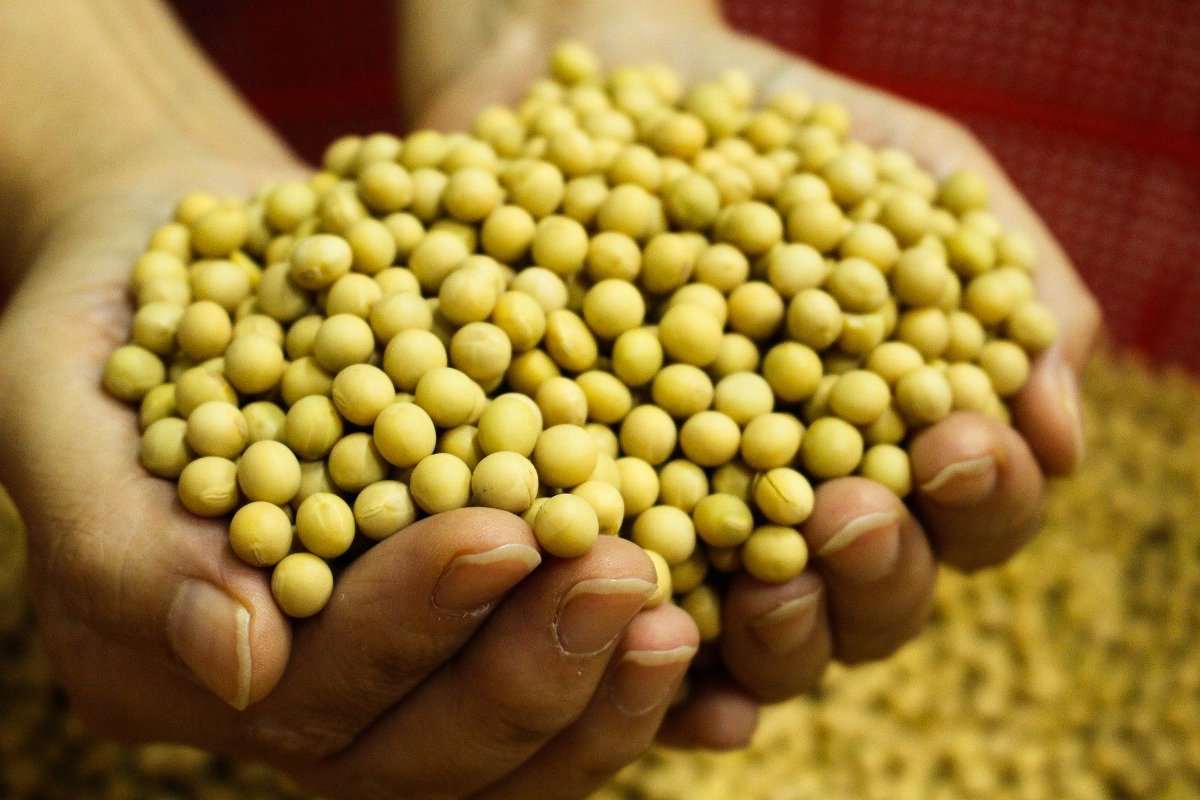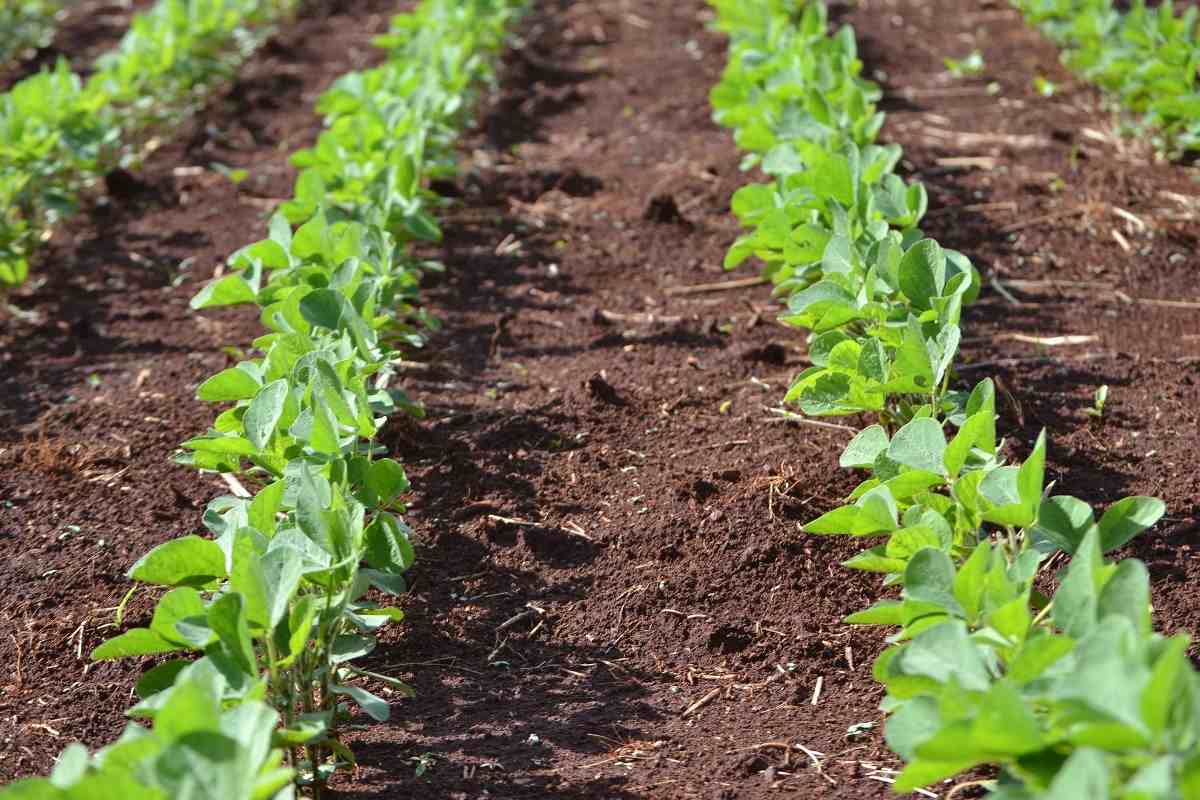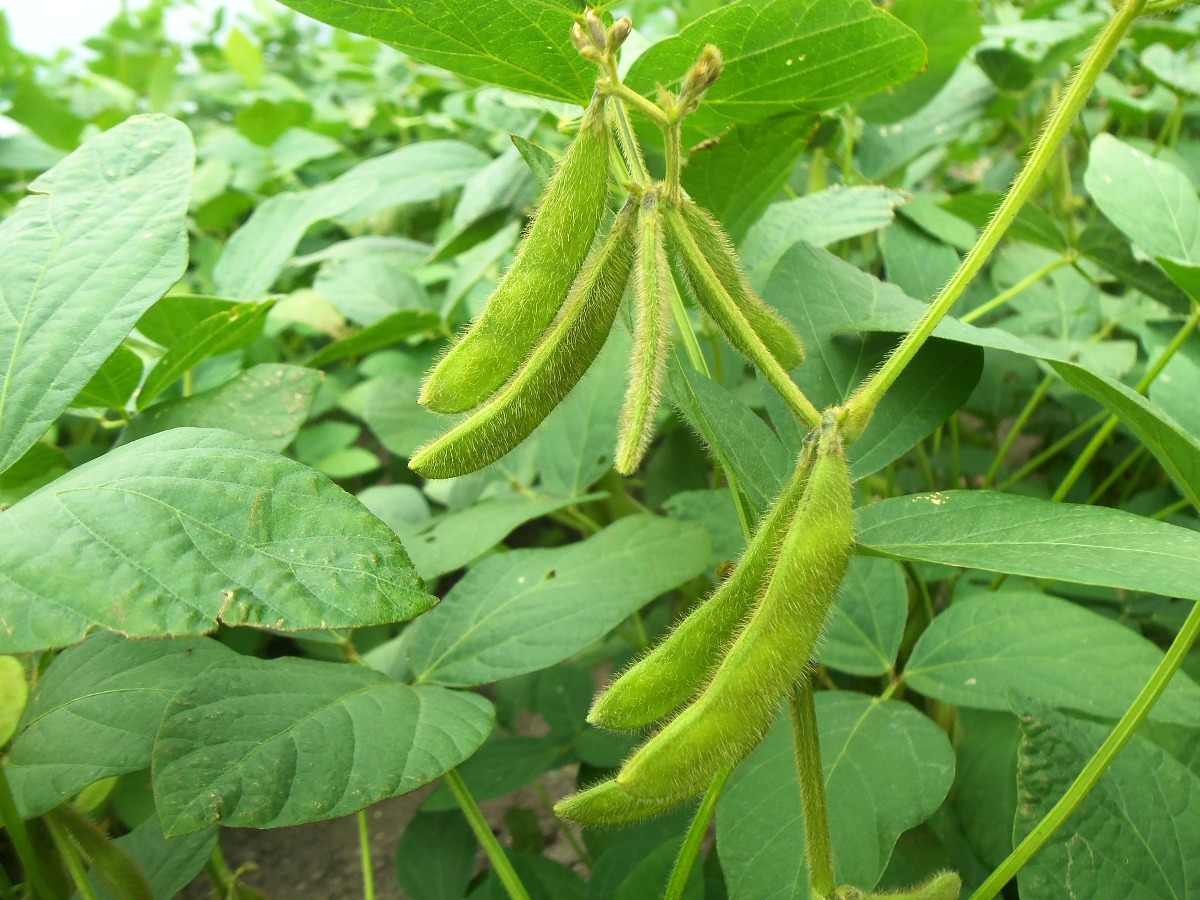Introduction to Soybean seed germination
Soybeans (Glycine max) or Soya beans are a common annual farm crop produced for the oil market, as well as livestock feed and human consumption. The Soybean crop is one of the most valued oilseed crops in the world. In general, proper germination of Soybean seeds and seedling establishment are critical processes in the survival and growth cycle of field crops. Soybeans should not be planted until the soil temperature is at least 15°C. In this article we also discussed below topics;
- How do you germinate Soybean seeds
- Soybean seed germination temperature
- How do you germinate Soybean seeds
- Factors affected for Soybean seed germination
- How long does Soybean seed take to germinate
- Process for germinating Soybean seeds
- Soybean seed germination period
- Paper towel germination method for growing Soybean
A step by step guide to Soybean seed germination process
Factors affect Soybean seed germination
Moisture – Planting into a moist seedbed with good seed-to-soil contact is necessary as moisture needs to move into the Soybean seed for germination to occur. Planting into dry soil with rainfall occurring too soon after can effect in crusting and poor Soybean emergence.
Soil conditions – Soil crusting can delay or prevent seedling emergence and also cause Soybean hypocotyls to be swollen or broken when trying to push through the crust. Fields with fine-textured soils, low organic matter, and little surface residue can be vulnerable to crusting, particularly where excessive tillage has taken place.
Temperature – Cold soil temperatures can cause seeds to remain dormant, causing them to become increasingly vulnerable to feeding by wildlife that digs up the seeds, insects, and seed or seedling diseases. Once seed emerged, Soybeans can tolerate a temperature dip down to -2.8°C for a short period.
Oxygen – Saturated, flooded, and compacted soils can reduce seed germination and emergence due to the lack of oxygen. Soil pore spaces filled with water reduces the amount of oxygen obtainable for seed respiration. Compacted soil reduces the availability of water and oxygen required for seed germination, root and plant growth, and nutrient uptake.
Variable germination in Soybean
The critical seed moisture content for Soybean germination is about 20%. A Soybean seed that has imbibed water has a split seed coat, or has an emerged radical will continue to germinate and grow as normal once the seed is rehydrated if the Soybean seed (embryo) remains above 20% moisture. If the moisture content within a Soybean seed falls to about 10% due to dry conditions after germination has started, then a dramatic difference exists among the different seed germination stages.
If the Soybean seed has imbibed water for 6 hours, then the seed is dehydrated to 10% moisture, germination is not affected. If the Soybean seed has imbibed water for 12 to 24 hours, then germination is reduced to 60 to 65%. If the radical has emerged and seed moisture levels drop to about 10%, then no survivors can be expected. To test Soybean seed viability, growers can conduct a simple germination test. First, excavate 100 Soybean seeds and then wrap them in a damp paper towel. Put these seeds in a warm location, and after 24 to 36 hours, count the number of seeds that have germinated. Remember that typical Soybean germination is about 90%.
After being planted in the soil, the Soybean seed absorbs moisture, changing from less than 13% moisture to about 50% in several hours. After 1 or 2 days the first root (called the radical) emerges through the seed coat and begins growing downward to establish the root system. The upper part of the young Soybean plant (the hypocotyl) begins to lengthen, pulling the remainder of the seed upward. About 5 to 15 days after planting, the new plant arches through the soil, and the oval seed leaves (cotyledons) open up. The cotyledons provide the seedling with food (that was stored in them) for about a week, they soon turn green and begin making a little additional food by photosynthesis. Later they drop off. Seed germination is a critical period in the life of a Soybean because poor emergence due to a soil crust, cold temperatures, or seedling pests or diseases can drastically cut yield.
Optimum temperatures for Soybean seed germination
Soybean seed germinates slowly at low soil temperature ranges; however, seed germination and emergence become rapid with temperatures above 25°C. Slow germination means seedlings are exposed to diseases that are favored by a temperature range of less than 13°C.
Planting time of Soybean
Spring is the time to plant Soybeans and as an annual crop, Soybeans grow from seed, produce and die in a single growing season. In areas that experience winter frosts, wait until 2 to 3 weeks after the last frost date to plant Soybeans. Plant Soybeans in late winter or early in spring when the soil warms to 15°C. Soybeans prefer an air temperature of around 21°C so plant as early in the season as possible in warm climates.
The spacing of Soybean seed or planting distance of soybean plants
Sow Soybean seeds 1 to 2 inches deep, 2 to 4 inches apart in rows about 24 to 30 inches apart. Thin successful seedlings from 4 to 6 inches apart; cutaway thinned seedlings with scissors at ground level being careful not to disturb the roots of plants. Do not soak Soybean seed before planting and do not overwater immediately after planting; too moist seeds can crack and germinate poorly. Plant the seeds ½ inch deep 2 to 3 inches apart once the danger of frost has passed. Thin to 6 inches in all directions.
Seed rate and seed treatment of Soybean
In case if you miss this: Sunflower Seed Germination, Time, Temperature, Process.

A seed rate of Soybean depends upon seed germination percentage, seed size, and sowing time. If the seed is 80 percent germination, 70 to 80 kg seed per hectare is required. For late planting and spring crops, the seed rate should be 100 to 120 kg per hectare. Soybean seeds are treated with Rhizobium culture.
Treatment of the seed with Rhizobium culture – Seed must be treated with Rizo (Trade name for Rhizobium culture) prepared for application to the legume seeds before planting. Rizo is obtainable in a polythene packet weighing about 150 gms per packet. Rizo powder must be sprinkled well to the moistened seeds so that all seeds are properly coated with it. One packet of Rizo is sufficient for 8 Kgs of Soybean seeds. The dose is to be doubled in case the Soybean seeds are treated with Sulphur or Mercurial compounds etc.
Soybean plant emergence
It commonly takes a Soybean seed about 2 days to germinate and sprout. The new plant doesn’t emerge from the ground until about 1 week after planting. Soybean plants are at the most vulnerable during this process and can be damaged by low temperatures or pests. If the initial planting is lost, the Soybean crop can sometimes be replanted with a shorter-maturing variety.
Soybean seed maturity
The newly formed Soybean seeds contain about 90% moisture. As the Soybean seeds fill with food, moisture content decreases to about 60-65%. When Soybean seeds are mature (filled), the moisture content is 45-55% and the pods and stems of the plant are yellow or brown. The mature seed itself will be completely yellow when mature (if it is a yellow-seeded variety).
In warm, dry weather, seed moisture will continue to drop to about 13 to 14%, when the crop can be harvested. In some Soybean varieties especially, the dying plants tend to lodge, making harvesting difficult, and in some varieties, pods tend to split open (shatter), dropping the seed and reducing harvestable yield. As seeds lose moisture they change from large, kidney bean-shaped to smaller and nearly round. When dry, the Soybean seed contains about 40% protein, 21% oil, 34% carbohydrates, and 5% ash.
Planting Soybeans
You should not miss this: How to Build an NFT Hydroponic System, Cost, Benefits.

The best way to plant Soybeans is direct seeding in the garden bed. Wait until the soil warms to 15°C or warmer before planting the seeds. Plant Soybean seeds about 1 1/2 inch deep in the soil and cover. Keep the area damp during seed germination and early growth. When growing Soybeans in pots, use the pots are at least 8 inches deep to accommodate the deep root system.
Soybean seed germination process
Soybean seed germination process is referred to as “epigeal” because food storage structures (cotyledons) are pulled above the soil surface. Soybean seed can begin to germinate when soil temperature ranges are approximately 10°C; however, seed germination is likely to be slow until soil temperatures warm to near 25°C. Upon being placed into the soil, the Soybean seed begins to absorb or imbibe water and as a result, starts to swell. When enough water (approximately 50% of the seed’s weight) is taken in, and with favorable temperature ranges, the radical breaks through the seed coat and rapidly develops into the primary seedling root, which can force the cotyledons toward the surface.
Lateral roots quickly emerge from the radical as it elongates and root hairs grow from the radical and lateral roots. Root hairs are barely visible and must not be confused with later developing and easily seen, branch roots. The root hairs become the major absorbing structures. Soon after the radical appears, the hypocotyls start elongating and forms a hook that pushes toward the surface. The cotyledons are attached to the hypocotyls and then progress upward with the growth of the hypocotyls. The hypocotyls can be simply broken if the soil surface is too hard or crusted. If the hypocotyl breaks, the seedling usually dies.
When the hypocotyl emerges, it straightens and in the process pulls the cotyledons out of the soil. The cotyledons start turning green because of their exposure to light and they open the epicotyl is revealed. The epicotyl contains small leaves, buds, and the growing point.
Saving Soybean seeds
If you want to replant your seed, save out the needed amount. The seed must be dried to about 13% moisture and kept in ventilated containers (cloth bags, cardboard boxes, or glass jars with cheesecloth covers). It must be stored in a dry, ventilated area at cool temperatures. Keep away from mice and rabbits.
Seed should maintain a good germination rate for the first year about 80 to 85%, but after the second year of storage, germination may drop to 65%. Test the seed germination rate before planting.
Paper towel germination for Soybean seeds
- Dampen a paper towel, wringing out excess water is essential to ensure that the towel isn’t too wet. Soybeans should be in a moist environment to begin germination, but too much water can damage the seeds or encourage mold.
- Select the Soybeans you wish to germinate and put them on the paper towel, folding it over so that they are covered on both sides. If germinating a large number of Soybean seeds, you may wish to use a second damp paper towel to cover them.
- Place the paper towel and Soybeans in a warm location, because the seeds require temperatures greater than 13°C to germinate. If desired, you could place the paper towel and seeds inside of a plastic sandwich bag before placing them in a warm location.
- Allow the Soybeans to sit undisturbed for 24 to 36 hours, and check to see how many of the seeds have begun germination. Soybeans have a germination rate of 90 percent, so most of the seeds must have begun splitting and developing the beginnings of a root system; any seeds that have not germinated after 36 hours are not viable.
- Keep the paper towel moist, spraying it with mist from a water sprayer if necessary to maintain it from drying out. The Soybeans need access to water throughout the seed germination process.
Causes of reduced germination of Soybean seed
Weather is the biggest influence on reducing the seed germination process. Wet conditions during the growing season increased pressure from fungal diseases such as Cercospora, and Pod and Stem Blight. As wet weather conditions extend into harvest, they continue to cause some issues. Frequent wetting and drying cause the pods to split open and then exposing the seed to the elements.
Management of reduced germination Seed
Use a high-quality seed treatment – A seed treatment will not improve Soybean seed germination but will preserve it by reducing seed and seedling mortality by protecting the seed from soil pathogens and insects.
Plant in warmer soils – Soybeans will germinate at a minimum soil temperature range of 10°C. When planting at this temperature emergence will take about 3 weeks after planting and with potentially lower seed germination. Optimum soil temperature range for emergence is about 25°C. Emergence time is reduced to about a week and can have a higher seed germination percentage.
Place in productive fields – Soil productivity is the main factor in Soybean seeding rates. In productive soils, Soybeans can produce more pods, and seeds per pod and lower plant populations have less effect on crop yield.
Handle Seed Gently – Soybean seed germination can be affected by physical damage the seed can experience when handling, especially on bulk seed handling equipment when transporting and filling the planter. By reducing belt speed, lowering augers to minimum height to reduce the height from which seed drops, and making sure the auger is as full as possible help to keep the Soybean seeds from moving too much, minimizing physical impact.
The yield of the Soybean crop
Under rainfed condition yield of Soybean is approximately 1600-2000 kg/ha and under Irrigated condition yield of Soybean is 2000-2500 kg/ha.
Commonly asked questions about Soybean cultivation
You may also check this: Future of IoT in Agriculture in India.

How long does it take for a Soybean seed to germinate?
It commonly takes a Soybean seed about 2 days to germinate and sprout. The new plant doesn’t emerge from the ground until about 1 week after planting. Plants are at the most vulnerable during this procedure and can be damaged by low temperatures or pests.
How long does it take for Soybeans to be ready for harvest?
Harvest Soybeans when pods are green, full, and plump, generally 2 to 3 inches long, about half mature. Soybeans for shelling and fresh use are ready for harvest about 45 to 65 days after sowing. Dry Soybeans need 100 or more days to reach harvest.
Do Soybeans need a lot of water?
Soybeans require about 15 inches to over 25 inches of water per year depending on planting date, maturity group, location, and weather conditions.
How long does Soybean seed last?
Store seeds in a cool, dark, and dry place and keep them in an airtight container to keep out moisture and humidity. Under these conditions, Soybean seeds will remain viable for 3 to 4 years.
What month are Soybeans planted?
Spring is the time to plant Soybean plants. As an annual crop, the Soybeans grow from seed, produce and die in a single growing season. In areas that experience winter frosts, wait until 2 to 3 weeks after the last frost date to plant Soybeans.
The conclusion of growing Soybean from seed
The above said-information may also be applied if you are planning to grow organic soybean or even growing soybean in pots in your home garden. This information is also useful for Polyhouse soybean farming.
ನಾನು 10ದಿನಗಳ ಹಿಂದೆ 2 ಎಕರೆಯಲ್ಲಿ ಸೋಯಾಬಿನ್ ಬೀಜ ಹಾಕಿ ನೀರು ಹಾಯಿಸಿದ್ದೇನೆ. ಬಿತ್ತನೆ ಮಾಡಿ 10 ದಿನಗಳಾದರೂ ಬೀಜಗಳು ಮೊಳಕೆ ಒಡೆದಿಲ್ಲ. ಖರೀದಿ ಮಾಡಿದ ಬೀಜದ ರಸೀದಿ ಇದೆ. ಮುಂದೆ ನಾವೇನು ಮಾಡಬೇಕು? ಸಲಹೆ ಕೊಡುವಿರಾ?